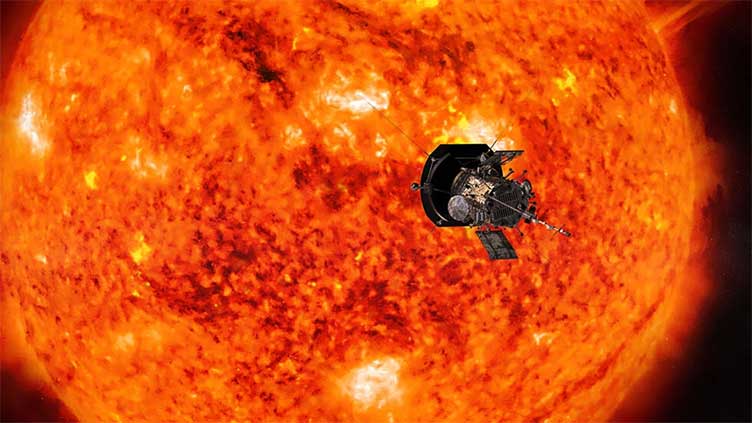Nasa's Parker mission poised for solar 'landing' in 2024

World
The Parker Solar Probe is the first spacecraft to have flown through the sun’s outer atmosphere
Since its launch in 2018, NASA’s Parker Solar Probe has inched closer to the sun with each passing year, shedding light on key solar processes. By the end of 2024, it will have set a new record by grazing our star from a distance of just over 6 million kilometres, delving deep into its scorching outer layers.
One of the most audacious missions in the history of space exploration, the Parker Solar Probe is the first spacecraft to have flown through the sun’s outer atmosphere, known to scientists as the corona. It is set to break new ground in late December by covering 96% of the distance separating our planet from its fiery star.
In doing so, Parker will hit speeds of around 700,000 km/h (or 435,000 mph), enough to fly from New York to Tokyo in one minute – making it the fastest human-made craft in history. It will achieve such velocity by swinging around Venus, using the planet’s gravity to tighten its orbit around the sun and acquire extra speed.
“This will be a monumental achievement for all humanity. This is equivalent to the Moon landing of 1969,” said Parker project scientist Dr Nour Raouafi of Johns Hopkins University, in an interview with the BBC. “We are basically almost landing on a star.”
Into the furnace
Parker’s mission is to make repeated passes of the sun, drawing ever closer to the star as it travels through its outer atmosphere – which, paradoxically, is 300 times hotter than its actual surface. That means weathering unimaginable conditions, including temperatures of close to 1,400 degrees Celsius and solar winds charged with high-energy particles.
The trick for Parker is to make rapid dives into this hellscape, relying on its blistering speed and a thick heat shield made of carbon composite. The shield protects an array of instruments that measure charged particles and magnetic fluctuations, capturing both images and sounds.
In 2020, recordings made close to the star provided the first sound clips of the solar wind – a stream of high-energy particles that flows continuously from the sun.
Forecasting solar storms
The mission’s aim is to gain a better understanding of solar activity and to shed light on the many mysteries surrounding the corona, where temperatures can reach a million degrees Celsius and above – compared with just 6,000C at the sun's surface. Scientists hope data collected by Parker will help understand why the sun’s outer atmosphere is so much hotter than its surface.
The corona is also where the solar wind is generated and sometimes whipped up into solar “flares” and “storms”, potentially disrupting our planet’s magnetic field, degrading communications and posing health risks to astronauts. Ultimately, Parker’s findings could pave the way for a space weather service capable of forecasting and tracking such events.
The probe’s end-of-year voyage will mark its best chance of acquiring a greater understanding of key solar processes. It will also be its last: beyond December, the probe’s orbit will no longer allow it to swing around Venus, effectively precluding an even closer encounter with the sun. – Courtesy France 24


